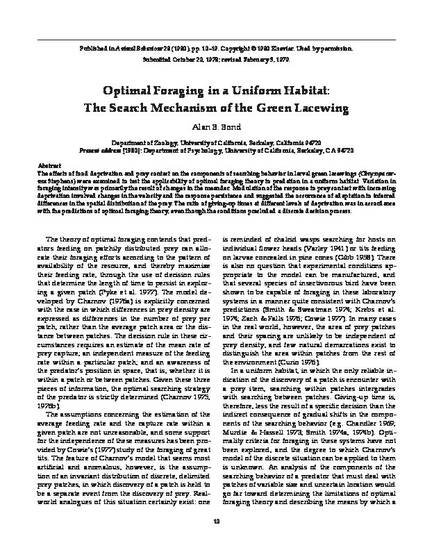
The effects of food deprivation and prey contact on the components of searching behavior in larval green lacewings (Chrysopa carnea Stephens) were examined to test the applicability of optimal foraging theory to predation in a uniform habitat. Variation in foraging intensity was primarily the result of changes in the meander. Modulation of the response to prey contact with increasing deprivation involved changes in the velocity and the response persistence and suggested the occurrence of adaptation to inferred differences in the spatial distribution of the prey. The ratio of giving-up times at different levels of deprivation was in accordance with the predictions of optimal foraging theory, even though the conditions precluded a discrete decision process.
Available at: http://works.bepress.com/alan_bond/8/